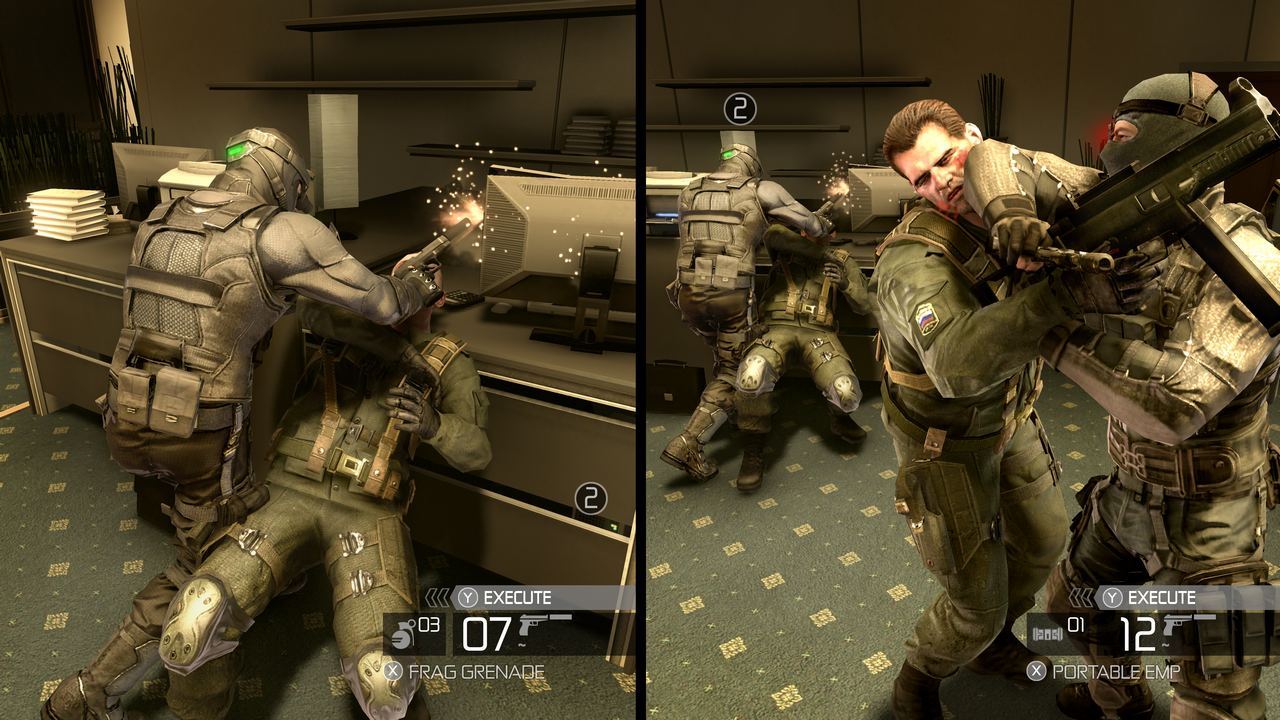Split-screen modes in videogames are often pejoratively labeled as the “little brother” feature. I think the association was always there, but only recently has the term itself gained popularity.
With the advent of XBLA, PSN, etc., console gamers are playing multiplayer titles the same way their PC counterparts have been for years: online. Supporting both online and split-screen modes is not a trivial task, so the older brother — much to the younger one’s assumed chagrin — ends up hogging the console. If a split-screen feature is present, though, both can enjoy the game at the same time, hence the “little brother” moniker.
Of course developing multiplayer games for a single screen has been around for ages. Shmups, puzzle games, rhythm titles, rail shooters, etc., often only require a single screen to accommodate all the participants. Other genres like scrolling beat-’em-ups or fighting games tend to lock or stretch the playing field to attain similar results. However, when a title requires a large physical separation between the players (such as in a racing game), console titles have generally relied on a split-screen approach.
Split-screens (especially with 3D games) are computationally expensive, so their implementation tends to be quite basic: each player gets his own personal rectangle of real-estate. In two-player games, this means dividing the screen into two portions with either a horizontal or a vertical line.

On older, squarish TVs neither the horizontal nor the vertical approach could really be that graceful, but the horizontal split became a de facto standard. It made sense since much like human vision, games were more horizontally oriented. It was the lesser of two evils.
With the rising popularity of co-op and the advent of widescreen HD TVs, though, I assumed this would change. My HD TV’s picture-in-picture option allows me to vertically split the screen between two visual streams, and it works quite well. After all, 8:9 is a lot closer to 4:3 than 16:4.5. It’s something developers have started to address — despite the fact that many current games are designed for a 16:9 aspect ratio — but split-screens still tend to be a bit of a mess.
To improve their implementation, I would suggest the following:
- Provide an option for either a horizontal or a vertical split-screen mode. Automatically selecting one might seem user-friendly, but it’s also a very divisive issue. Once split-screen is implemented, it should be relatively simple to support both modes, so why not let the player choose which one he prefers?

- There’s no rule that says 100% of the screen real-estate must be taken up by the players’ viewports. This can often produce a warped and cropped appearance, so why not try to maintain correct aspect ratio (in either mode), and use the remaining space to display a minimap, the inventory, HUD components, etc.?
- The major issue with vertical split-screens seems to be the lack of peripheral vision. It’s a legitimate complaint, but one that also seems easy to address with a little bit of field-of-view tweaking. FPS games in particular have been reducing the FOV for quite a while now, and widening it for split-screen modes should be very simple to do.
Thoughts?
I tend lose focus (at least in driving games) if there isn’t a black separator between viewports. So I’d say it should be an option in split-screen menu.
That’s actually a very good point. Even a small border defining each player’s visual real-estate helps to take it all in. Without it, both viewports can “bleed” into each other making it much harder to stay focused.
A lot of PC’s have dual monitors these days. It would be nice to put one player on each monitor.